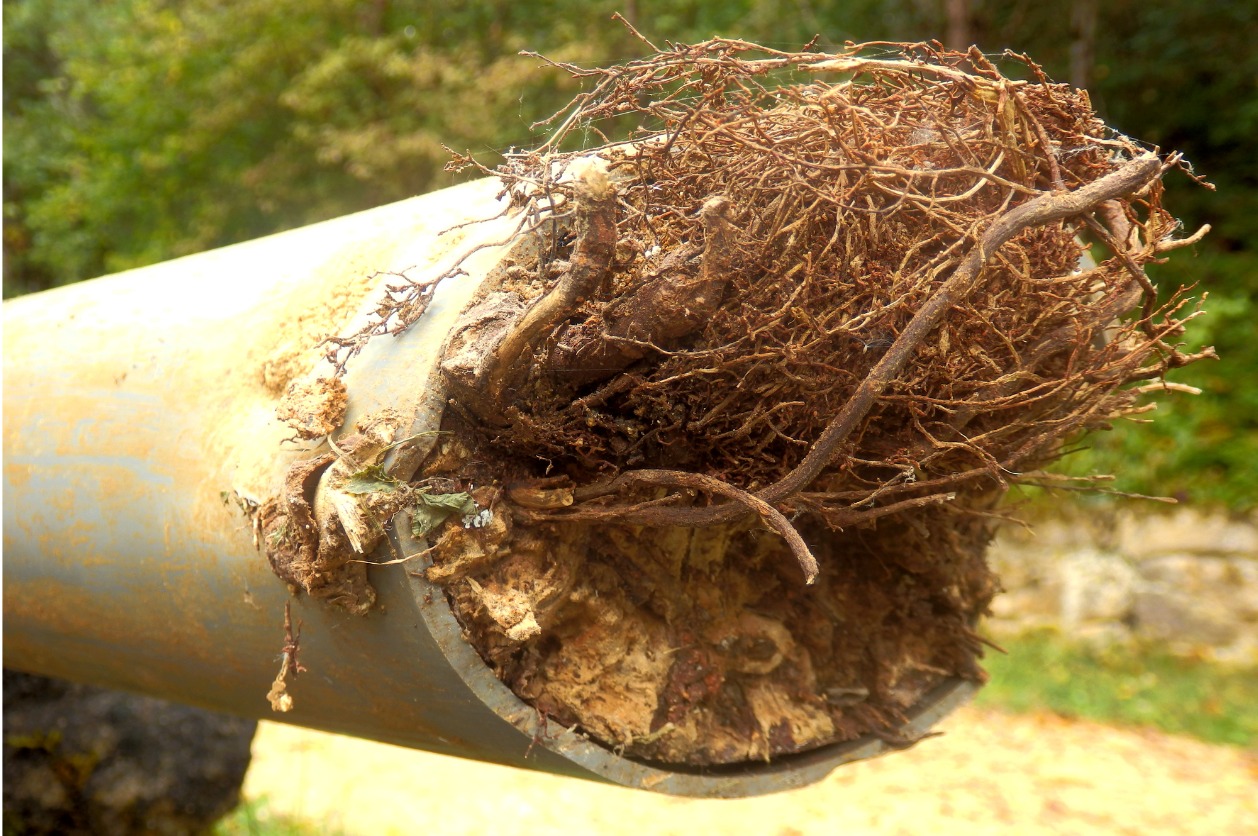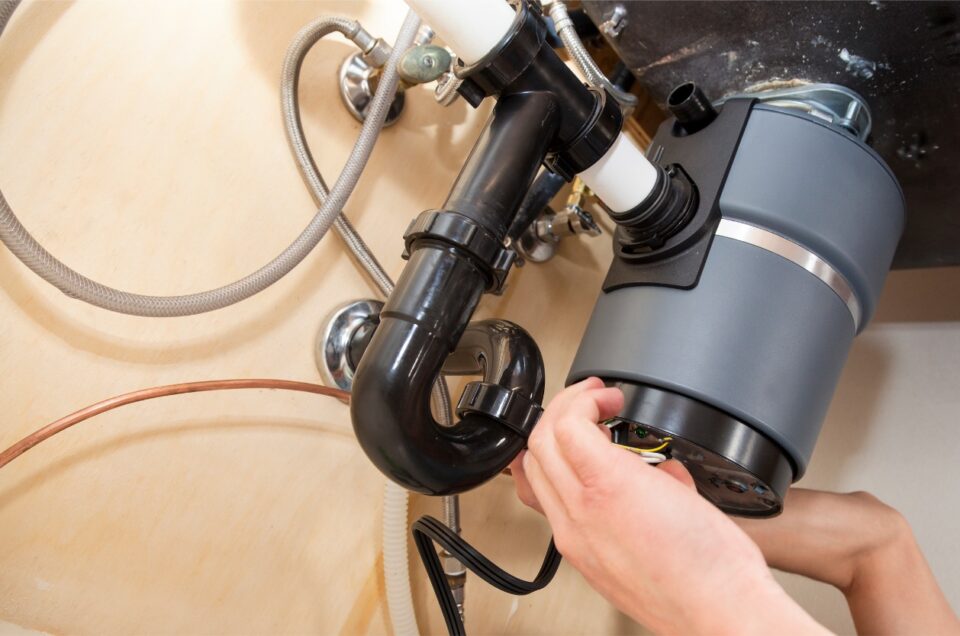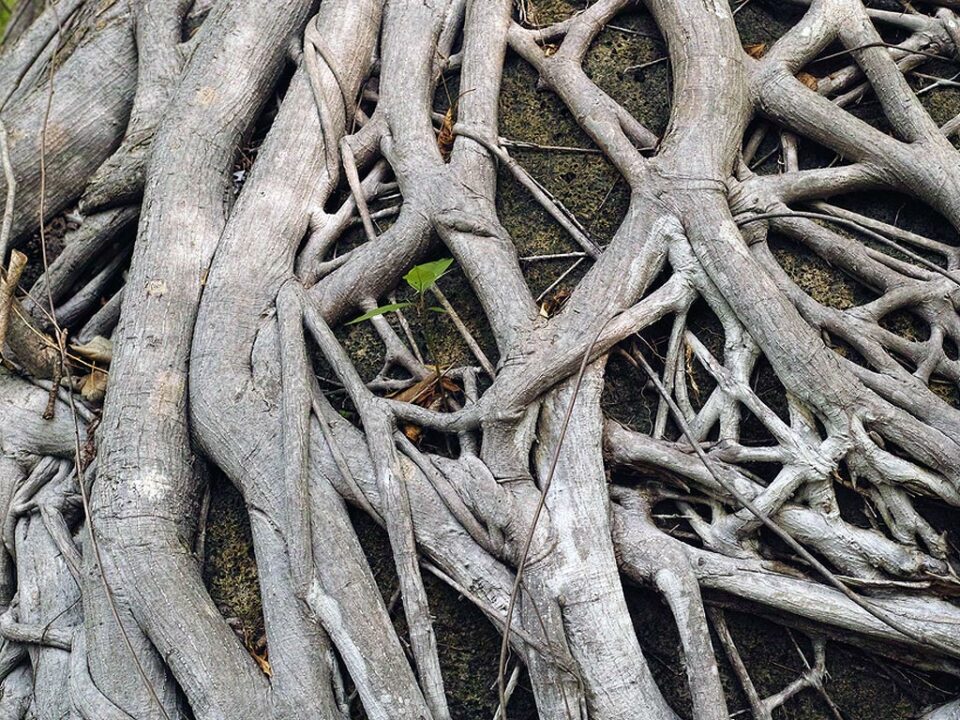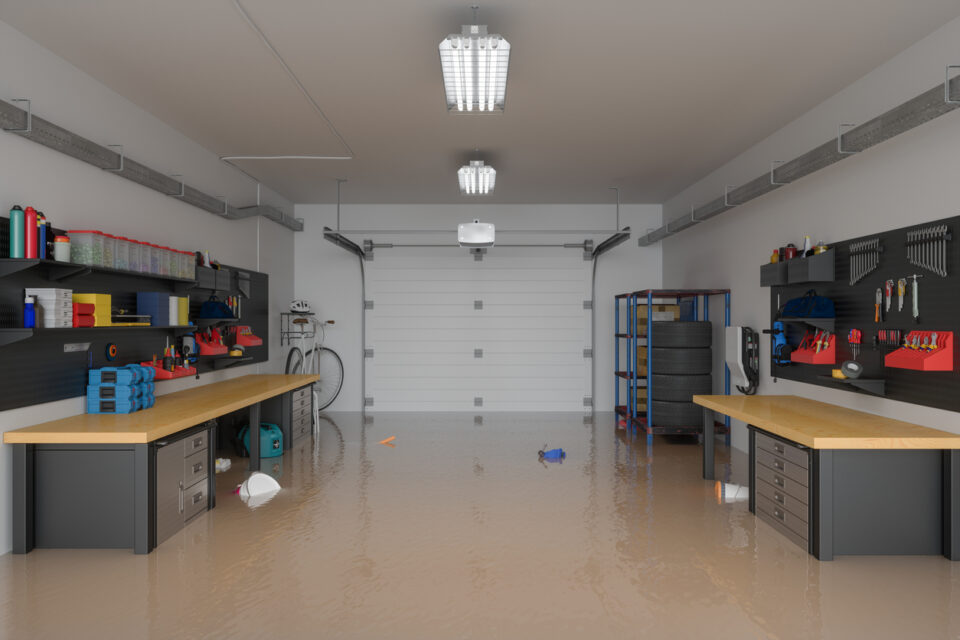Tree roots grow to seek moisture and nutrients from below the ground. It is a root’s job to extend seemingly endless thread-like tendrils in every direction, frequently deep into the soil. Where a root finds moisture, it slowly grows to become a literal highway of nutrients to the tree. Unfortunately, a common source of underground moisture for these roots is your buried sewer lines. And as we all know, sewer lines and tree roots are not a good match – it is not a mutually beneficial relationship!
Note that different types of trees have different root structures, some are shallow, while other root structures grow deep. So if you see tree roots above ground that might be a good sign. If you plan on planting a tree, either plan tit far ways from your sewer line, or choose a tree that has a shallow root structure.
Sewer lines and roots from trees or shrubs need to be kept apart, but this is not always the case. Tree roots are tenacious and ultimately destructive. They can buckle pavement and concrete on the surface, and likewise crack into any weak point in your pipes to reach the moisture inside. Unfortunately, when the root swells, it can crack and block your sewer lines, which becomes a serious problem.
The good news is that you have an expert in sewer line remedies on your side. The Balkan team helps clear roots out of sewer lines using a full array of tools, treatments, and routine sewer and drain line maintenance ideas.
Tree Roots Love (to Block) Sewer Lines
When it involves sewer lines and tree roots, it is of course not a good idea to let them meet each other. While roots love to infiltrate sewer lines, the effect is always destructive. Roots swell and extend more tendrils when they reach moisture. This can lead to roots cracking open your sewer line or blocking your sewer with a new root system.
While it’s not the tree’s fault, it is important to remove roots from your sewer lines and keep them out. Sewer experts use different tools and techniques to preserve the integrity of your pipes and your favorite nearby tree. With the right approach, you can have the roots safely removed, save your pipes, and restore your sewer function while preventing trees from infiltrating your sewers again.
Sewer Lines and Tree Roots: Identifying the Problem
When you have a clogged sewer line, the first step is to identify the problem. Because drain snaking is unlikely to dislodge an anchored root system, a sewer camera is the first step to confirming the problem. The sewer camera line will identify the root system, including how many roots are present, the location of the roots, how large they have grown, and what it may take to dislodge them.
How to Remove Tree Root Growth From Sewer Lines
Once your sewer lines and roots get together, you will need some specific techniques to remove them. The Balkan team will advise you on the best methods based on the condition of your sewers and the size of the roots.
Hydro Jetting / Sewer Jetting
Hydro jetting (aka a sewer jet) is the fastest method to separate sewer lines and root infestation by using the force of high-pressure water jets with a specialized head to break apart roots of almost any size or density. A jetter breaks up clogs in a sewer line without using harsh chemicals that might put your pipes at risk.
Hydrojetting can help return your sewer line to functionality so your property can use the drains again. However, it will not stop roots from quickly growing back or growing back over time. That’s when you might consider a chemical treatment at pre-determined intervals.
Electric Root Cutter Snakes
A special type of drain snake equipped with a root-cutting blade can help to break up and cut out bad tree root snarls inside your sewer lines. Like chopping spaghetti, the root cutter will break the strong root tendrils into smaller pieces that can then be flushed with hydrojetting.
In other cases, powerful rodding machines will cut through virtually any root growth, no matter how extensive. Any heavy-duty electric sewer cleaning machine should only be used by an experienced professional.
Rock Salt is a Questionable Solution
You can use salt on any plant to sap the moisture from the roots, causing them to shrink. However, rock salt can be harmful to your pipes, especially at narrow points and bends where the salt itself can get stuck and will take time to dissolve. Your sewer expert will probably advise when rock salt is or is not a viable option.
Root Desiccant Treatment Are Effective at Keeping Sewer lines and Tree Roots Separated
Root desiccant uses the same principles as rock salt. However, it is safer for a wider variety of pipe materials and designs, and it does not harm the tree or the plant itself. When it comes into contact with roots, it will remove moisture and cause the roots to shrivel and die within the sewer pipes. This will discourage roots from growing again. Root-X is a very popular brand of such a product and must be applied with great care.
How to Prevent Roots From Causing Further Problems
How do you keep new roots from growing into your sewer lines? Trees will keep seeking moisture from the same source even if you kill the first set of roots. Sewer experts understand this and have devised several ways to keep sewer roots from becoming a recurring problem for each property.
Foaming Root Desiccant to Keep Sewer Lines and Tree Roots Apart
Root desiccant causes roots to shrivel and retract from sewer lines. Foaming root desiccant attacks current roots and coats the inside of your pipes with a protective film.
Roots that try to infiltrate again will encounter the film, experience moisture loss, and look elsewhere. Or rather, the tree will expend energy on roots going in another direction.
Sewer Lines and Tree Roots Barriers
You can also place physical barriers between your sewer lines and nearby tree root systems. With some amount of digging, you can place a plastic or structural barrier between your sewer lines and roots so that roots cannot grow toward your pipes.
In other cases, you might even opt to encase your sewer line with concrete. But as stated previously, the easier remedy is to not plant trees near your home sewer line.
Trenchless Pipe Lining
A new technique introduces a new plastic pipe to the interior of an already cracked and root-infested outer sewer pipe. This allows old sewer lines to quickly be replaced by new pipes made from more root-resistant materials. Before this process can have a chance at success all the roots must be entirely removed from the pipe, and the pipe must be verified to be in acceptable condition to receive the liner.
Another important point is that pipe lining and pipe bursting are not allowed in many areas, including New York City. As a matter of fact, pipe lining is expressly not permitted in New York City.
Schedule Your Sewer Root Removal With Team Balkan
If you have roots in your sewer lines within the NYC area, the Balkan team can provide prompt, attentive service and long-lasting sewer solutions. Our team will arrive with the full array of tools to inspect your sewer, remove the roots, and keep roots from coming back.
We are proud to provide courteous and friendly drain and sewer cleaning services, with over 70 years in business and 90,000 satisfied customers. We have built a history of drain services with a team you can trust.
Deal With Sewer Lines and Tree Roots with Expertise, Experience, and Integrity
Whether you have fully clogged or partially blocked sewers, Balkan Sewer and Drain Cleaning will provide a solution for you. Say goodbye to sewer root problems with Team Balkan on the job. Contact us today to schedule a consultation.




